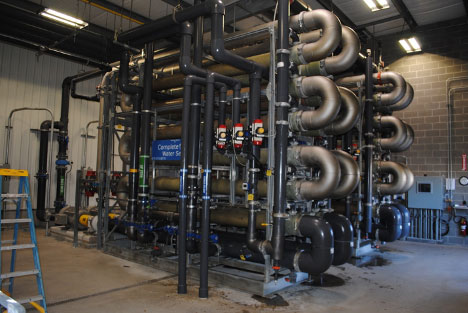Food Manufacturers: Top 3 Wastewater Troubleshooting Tips
Did you know that many food manufacturers have 3 issues in common when it comes to meeting wastewater discharge permit requirements? They include pH, total suspended solids (TSS) and fats, oil and grease (FOG). The most common processes for treating these constituents is pH adjustment, and chemically assisted dissolved air flotation (DAF) for TSS and FOG removal.
The following troubleshooting tips are offered to assist the treatment plant operator with common operational problems with these processes. Complete Water Services LLC has the knowledge and experience for correcting operational problems of existing systems, or for providing a turnkey approach for installing new or replacement systems. Below are 3 simple troubleshooting tips to keep your wastewater treatment system operational.
- Effluent Wastewater pH Outside Permit Conditions
- The first thing you want to do is clean and calibrate the probe on a routine basis. Clearly this sounds simple, but oftentimes the probe is not reading the pH correctly due to a buildup of solids or grease. Therefore, routine cleaning of the probe often corrects the pH problems. In addition, we also strongly recommend keeping a backup pH probe in inventory. This could be a wastewater life saver because it could take days to get a new one if it goes out. Further, we also recommend providing the wastewater operators with a hand held pH meter so they can confirm the system controller is working properly. However, if you are experiencing pH violations and do not have an existing pH control system, CWS can provide a turnkey solution for you.
- The second thing to look into is the size of the chemical metering pump. Oftentimes they are too small to provide enough chemical to correct the pH properly. Interestingly, the wastewater chemicals used to correct pH in the wastewater need to be dosed within a specified time. However, if the pump is too small it will not deliver the required amount of chemicals, within the required time, to properly adjust the pH. In addition, you should also confirm the pump has not lost prime if you are experiencing pH issues. Unfortunately, this occurs more than one would think.
- Last, you will want to make sure the pH adjustment process has adequate mixing, or retention time, to allow the wastewater to actually reach the desired pH level.
- High Suspended Solids in the Effluent in Excess of Permit Conditions
- High Fats, Oil and Grease in the Effluent Discharge
Maintaining proper pH is the #1 problem with most food plant wastewater discharges. For example, if the pH is too low or too high it may be out of range for the plant discharge permit. Unfortunately, this can cause a permit violation. In addition, proper pH levels are critical to separation chemistry for removing FOG and TSS. For example, if pH of the wastewater in the DAF or clarifier systems are too low or too high, the treatment chemicals will not work properly. This can cause increases in effluent contaminants and result in permit violations. Therefore, take these three steps:
A variety of issues can cause high TSS in the effluent. However, one of the most common causes are when there is too much flow through the separation process. For example, when the DAF (or clarifier) is rated for 100 gallons per minute, but you are pumping 200 gallons per minute, it will result in much higher effluent solid numbers. Too high of flow rate can exceed the time required for the separation process.
Another problem that can cause solids carryover is improper treatment chemistry. Jar tests are a good way to evaluate this type of problem.
Another cause is when the wastewater separation process has excessive settled solids buildup in the unit. To prevent this, most DAF manufacturers recommend washing out the DAF once per week. Unfortunately, if the sludge settles and accumulates, the DAF or clarifier will “blow solids” because it is not being emptied properly.
High oil and grease in the effluent is common to most food processing plants, whether you are making bread or brisket. However, the oil and grease may come from butter in the baking process, or fats from processing meat protein products, but it shows up as FOG in the effluent.
However, you may be able to correct this by tweaking the chemistry in the solid’s separation process. In addition, you could also correct some of the issues noted previously, such as correct pH or flow problems.
When in Doubt Call Complete Water Services for Wastewater Troubleshooting
CWS is a team of professionals with extensive experience solving industrial, commercial and community water supply and wastewater treatment challenges. Most importantly, CWS offers a powerful combination of hands-on plant experience, design, consulting, troubleshooting, and construction expertise.
If you are in need of a wastewater system audits, CWS can help. In addition, we can produce a report that defines the causes of discharge permit problems. Further, our experts can help you budget for wastewater system upgrades or wastewater operator training. Please contact us with any questions or to schedule a site visit.

